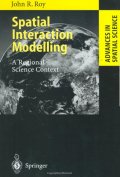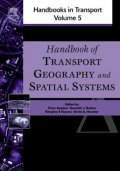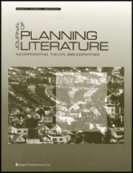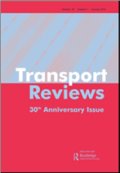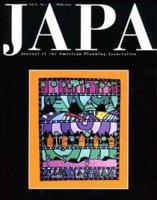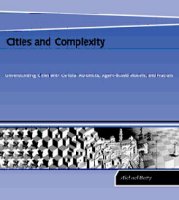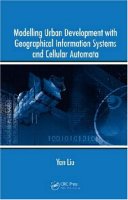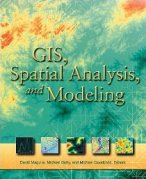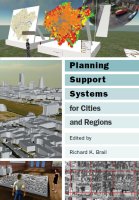One Key Reference for Each Lecture
The background reading pertains to the first few lectures. I have identified one key reference for each of the lecture blocks and these are listed below. For the first two lectures, then the material generally on models that is listed in the Bibliography will suffice and you are advised to look – skim and digest – the various materials that are scattered over this site.
For Lectures 3-5 which deal with generic principles of Spatial Interaction, John Roy’s (2004) book Spatial Interaction Modelling: A Regional Science Context (Springer, Berlin) is a good summary. Get it from the library if your library has it. Here is the Amazon.com entry
For Lectures 4-5 on Land Use Transportation Models and Integrated Models, then the key handbook Button, K. J., Haynes, K. E., Stopher, P., and Hensher, D. A. (Editors) (2004) Handbook of Transport Geography and Spatial Systems, Volume 5 (Handbooks in Transport), Elsevier Science, New York, has several good article on land use transport models – see those by Horowitz, Echenique and Miller amongst others. Also if you log onto this link, it will take you to Google Books which has a copy of the entire handbook
For Lectures 5 and 6 on Integrated Urban Models and Integrated Assessment, the handbook edited by Button et al. which we referenced in Lecture 3 above has a good paper in it by Miller, but the two other key references are Iacono, M., Levinson, D., and El-Geneidy, A. (2008) Models of Transportation and Land Use Change: A Guide to the Territory, Journal of Planning Literature 22, 323-340, and Hunt, J. D. , Kriger, D. S. and Miller, E. J.(2005) Current Operational Urban Land-Use-Transport Modelling Frameworks: A Review, Transport Reviews, 25, 3, 329-376. Click the titles below to get access the copies of the articles
For Lecture 7 on Cellular Automata Models there is a relatively simple and I hope intelligible article I wrote in 1997 in the Journal of the American Planning Association: Batty, M. (1997) Cellular Automata and Urban Form: A Primer, Journal of the American Planning Association, 63, 266-274. But there is a lot to read on CA. My book Cities and Complexity (MIT Press, Cambridge, MA, 2005) has a lot of general material and covers the DUEM model. A more focussed book is Liu, Y. (2008)Modelling Urban Development with Geographical Information Systems and Cellular Automata (CRC Press, Boca Raton, FL). Click on the icons below to get to the article online and info on the books from Amazon.
For Lecture 8 on Modelling Urban Morphology: Fractal Geometry, Relations to CA, and Urban Form , have a look at our book Fractal Cities (Academic Press, 1994) which you can download from our web site. Click the link below. In the edited book, GIS, Spatial Analysis, and Modeling(ESRI Press, Redlands, CA,co-edited with myself, D. J. Maguire and M. F. Goodchild), there are several good articles on various aspects of ABM, CA and LUTI models which are relevant to many of the topics introduced in these six lectures. ENJOY.
For lecture 9 on Agent-Based Models, my Cities and Complexity book suffices. and I would have liked to present a lecture on planning support systems but I will not have time so I have put up my article on PSS from Brail’s recent edited book Planning Support Systems: Progress, Predictions, and Speculations on the Shape of Things to Come, in R. K. Brail (Editor)Planning Support Systems for Cities and Regions, Lincoln Institute of Land Policy, Cambridge, MA, 3-30, which you can get by clicking on the link below

